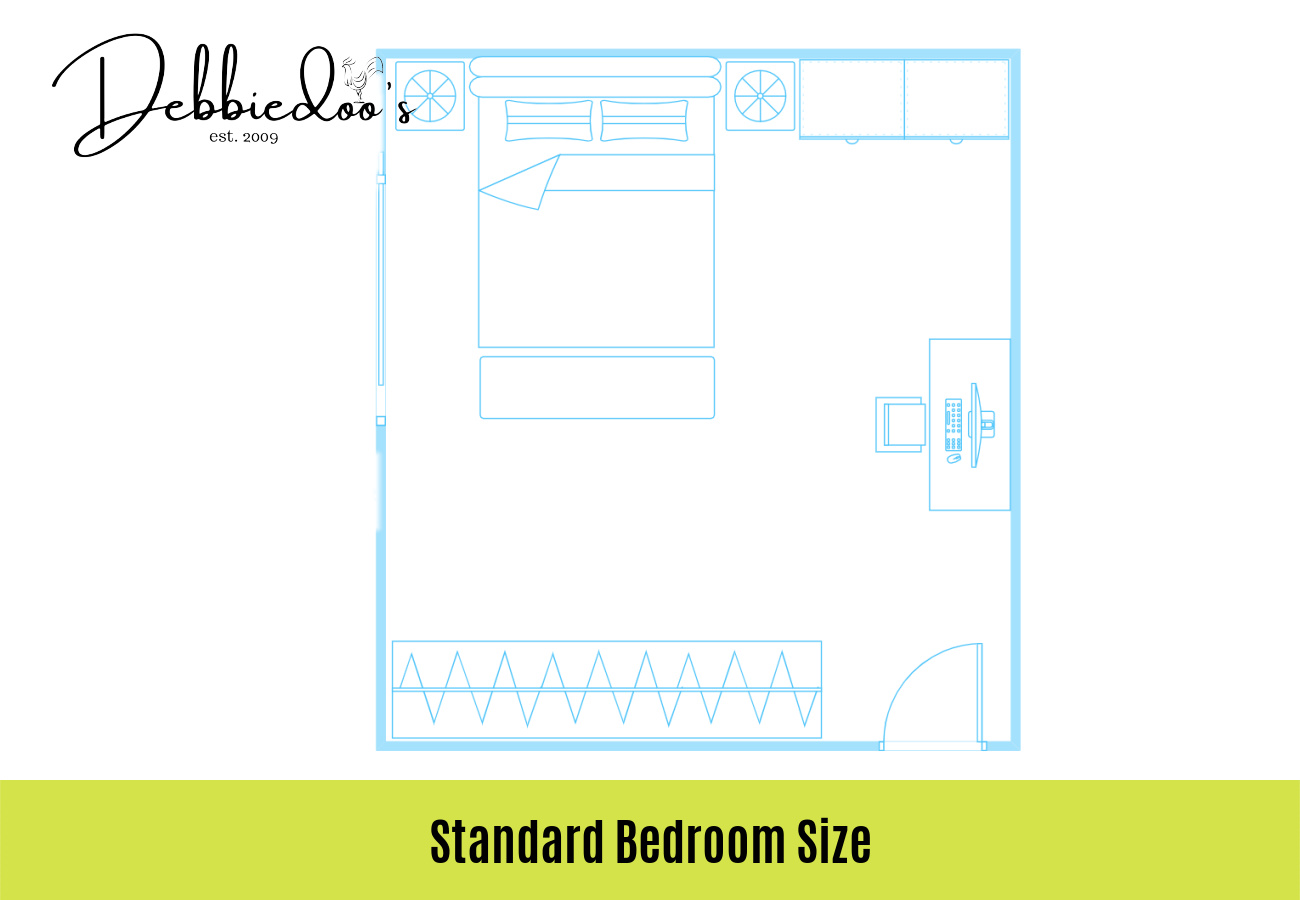It’s important to consider the standard bedroom size when building a new house or sprucing up your current place. This guide lists standard bedroom sizes in the US for master, secondary, guest, and kids’ bedrooms

| Bedroom type | Size (ft / m) | Square footage (ft² / m²) |
| Master bedroom | 14×16 / 4.27×4.88 | 224 / 20.81 |
| Secondary bedroom | 10×12 / 3.05×3.66 | 120 / 11.15 |
| Guest bedroom | 10×12 / 3.05×3.66 | 120 / 11.15 |
| Kids’ bedroom | 10×10 / 3.05×3.05 | 100 / 9.29 |
Average master bedroom size
The master bedroom is usually the biggest in the house, measuring around 14×16 feet (4.27×4.88 meters). This space is enough to accommodate a king-size bed, two nightstands, a chest of drawers, a TV stand, and even a chair for a sitting area.
The master bedroom creates a relaxing retreat for homeowners and often has direct access to a walk-in closet or master bathroom.
Standard secondary bedroom size
The average size of a secondary bedroom is 10×12 feet (3.05×3.66 meters) or roughly 120 square feet (11.15 square meters) in the US.
Significantly smaller than the master bedroom, a standard secondary bedroom houses a queen or full bed, a small dresser, and a bedside table. It’s typically for older children or other adults living under the same roof. Moreover, secondary bedrooms are versatile spaces that can be repurposed when the older children move out, such as a home office or hobby room.
Standard guest bedroom size
A guest bedroom has the same standard size as a secondary bedroom: 10×12 feet (3.05×3.66 meters) or 120 square feet (11.15 square meters). So this space is enough to fit a queen or full bed, a nightstand, and a small dresser or desk.
Guest bedrooms are temporarily used since they provide a welcoming space, comfort, and relaxation for visitors spending the night.
Standard kids’ bedroom size
A child’s bedroom is smaller than an adult’s, often measuring 10×10 feet (3.05×3.05 meters) or 100 square feet (9.29 square meters) in the US. You can fit a single or twin bed, a small dresser, and a desk for school or creative activities in this space. Young children should have enough space to sleep, study, and play. However, they should move to a secondary bedroom when they get older since they will need the extra footage.
While keeping average bedroom sizes in mind is a good idea, they’re not set in stone. It’s best to consider your specific situation, such as the house’s layout and furniture size.

